How do we manufacture the aluminum alloy carabiner?
When many customers choose carabiners, the first thing they care about is the price cost; but after the actual cooperation, they are more concerned about:
“How did you make it? Can it be done this way?”
We meet many customers who ask:
- Can the logo be customized on one side or both sides? Where can the logo be placed?
- Can the Gate and Spine be made in different colors?
- What material are your carabiners made of? Can they be used for mountaineering?
Our answer is:
- Regarding the carabiner, our logo will be placed in the middle of the spine, which is the most beautiful and can show the company’s logo brand. We can also customize the logo on one or both sides, and we will try our best to meet customer requirements.
- The gate and spine can be made in different colors, but if it is not the existing color of the product, we need to charge a color adjustment fee.
- We have three types of carabiners: 6061 & 6063 & 7075 aluminum alloy carabiners, divided into different application areas.
·6061/6063 carabiner is suitable for promotional gifts, fashion accessories, outdoor activity accessories (camping, hiking)
·7075 carabiner is used for rock climbing and is used in scenes that require load-bearing capacity
Back to the point, this article will introduce how our carabiners are made. You can see the authenticity of our factory through this information. This is not a simple manufacturing process, but a combination of craftsmanship, details, people and sense of responsibility behind a small hardware product.
Today, we want to share with you how our factory produces a stable, durable and fashion aluminum alloy carabiner step by step.
Here is our carabiner production process based on the 6061 and 6063 aluminum alloy:
1.Bending Forming
Everything starts with an aluminum bar. We use 6061 or 7075 aluminum alloy.
Preliminary bending and forming through precision molds to ensure that each hook has a standard shape and size.
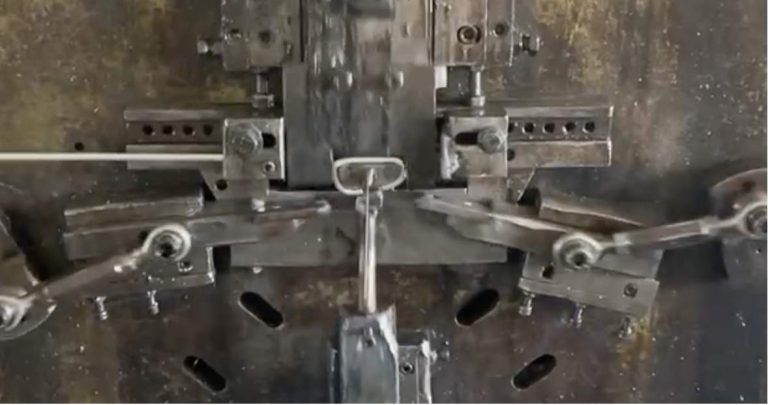
2.Flatten Ends
The two sides of the bent carabiner need to be flattened to provide a stable support point for the spring component.
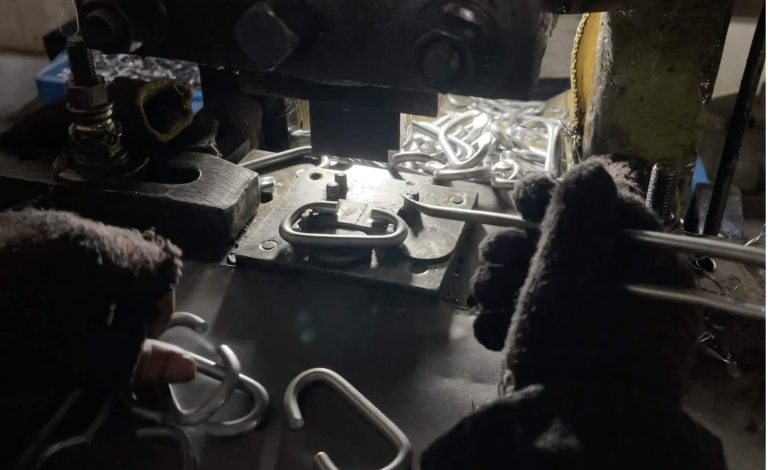
3.Trimming & Punching
Then, punch holes on both sides of the fixed point to ensure that the subsequent spring assembly can be accurately installed.
We use a custom stamping die to ensure that the hole position of each button is accurate and consistent.
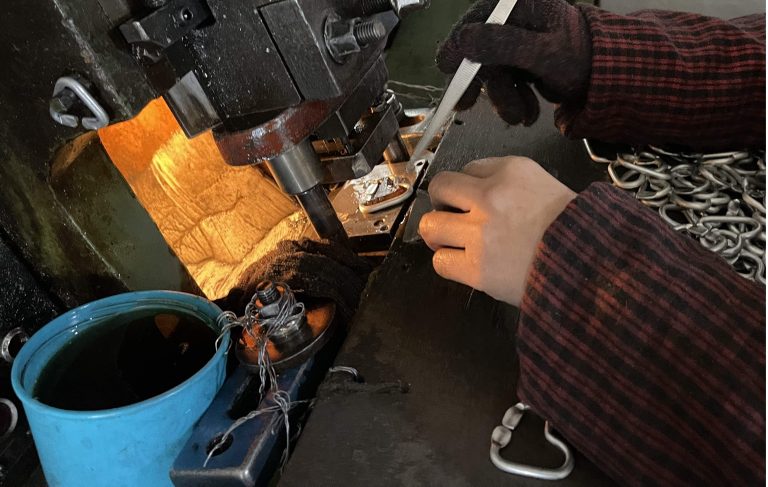
4.Surface treatment: Manual Polishing OR Vibration Grinding
This is an important step to determine the “look and feel”.
Some customers want a smooth, delicate and shiny surface. The product requirements are high and strict, so we will use manual polishing, through dozens of cloth wheel grinding, to make the surface smooth and the sharp edges of the carabiner flat;
Some customers pay more attention to cost and batch efficiency, so we use vibration grinding to uniformly process batches to make the appearance clean and not hurt the hands.
Customers can choose the most suitable one according to their needs for the product and the application field of the product.
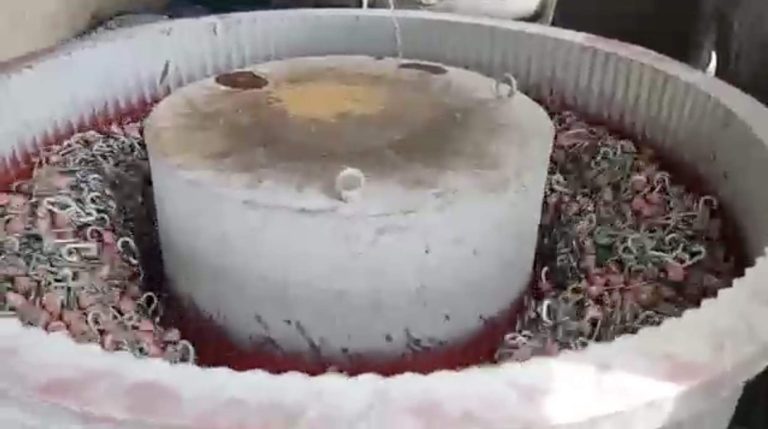
5. oxidation–Anodizing
Color is not only about appearance, but also about corrosion resistance. We use environmentally friendly anodizing process to form a dense protective film on the aluminum surface. The color selection can be customized, and it is scratch-resistant and anti-fading.
Customers can also choose sandblasting, and the surface effect of the buckle is completely different.
- If you want a more delicate and beautiful surface with uniform color → Glass yarn
- If you want a high surface roughness and strong powder spray adhesion → Diamond sand

6.Hand Assembly of Spring & Shrapnel
Whether a carabiner is easy to use depends on the “opening and closing feeling”. The material and elasticity of the spring will affect the smoothness and stability when you use it. It is manually installed by skilled workers one by one to ensure that the elasticity is moderate, it will not cut your hands, and it will not rebound and fail.
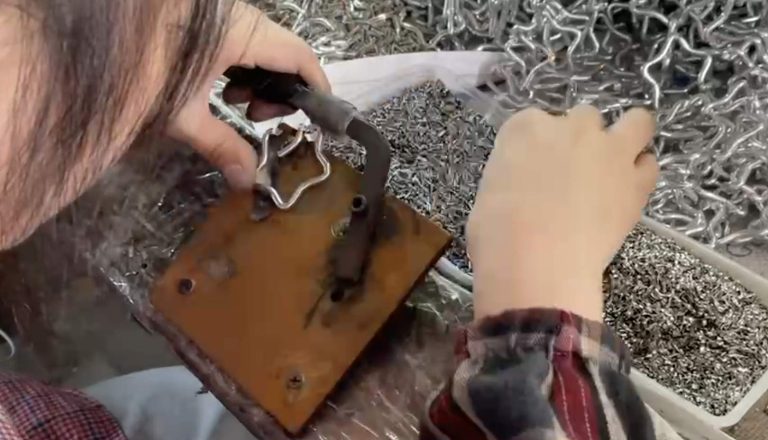
7.Riveting
After the spring is installed, it is firmly fixed by riveting. We use special equipment and molds to control the riveting depth to avoid the spring loosening or crushing the spring.
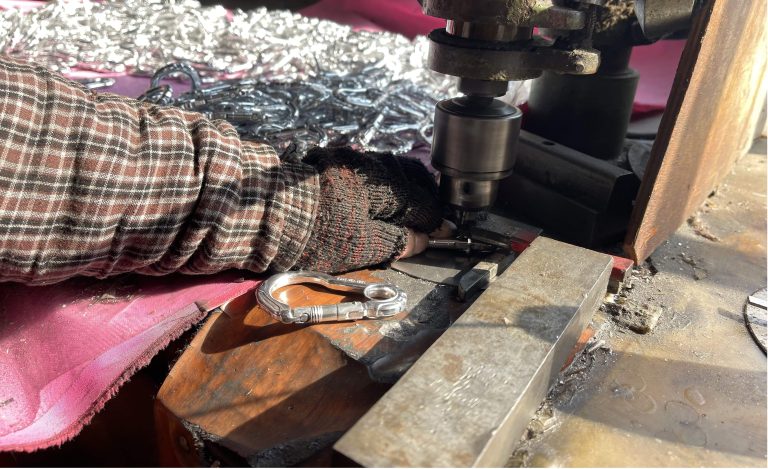
8. Calibration Spring Rod
The last step is to manually check the spring elasticity, opening and closing smoothness, and whether the spring is loose. Ensure that each one can be “opened neatly and closed securely”.
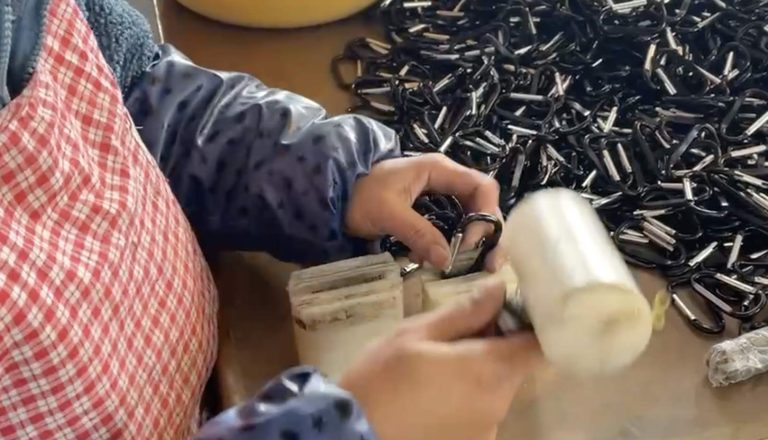
This is more than just a production process
For us, a carabiner is not a small piece of hardware, but a product that goes to market with the customer’s brand.
If you are preparing to develop a carabiner with your brand, if you are interested in stable technology, flexible customization, and long-term cooperation, we are very welcome to communicate with you further.
Welcome to contact us: info@samhe.com (get a free quote)
You can also exploe our Youtube to watch more production videos: https://www.youtube.com/@carabinermanufacturershichuang

